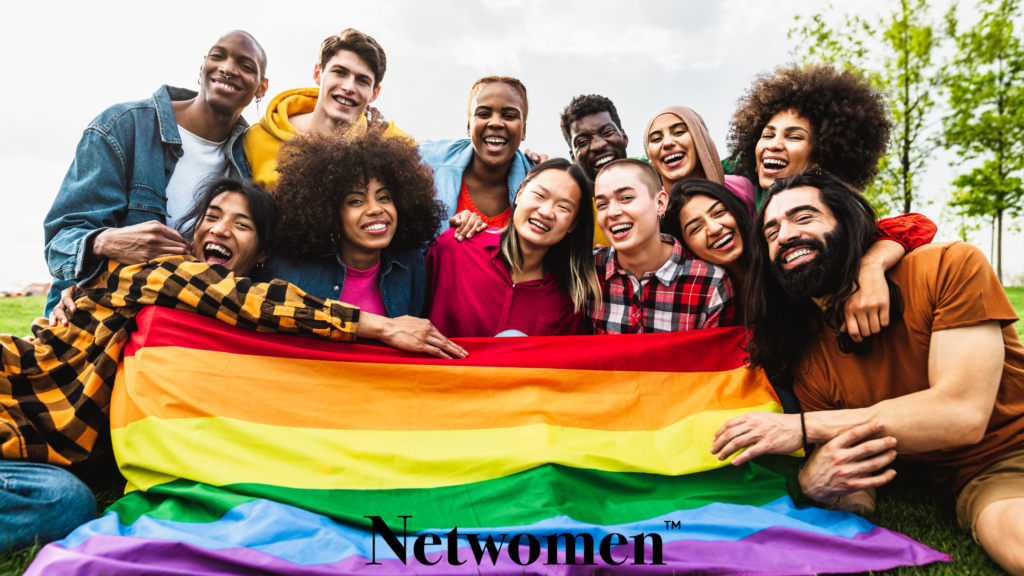Creating a Pipeline for Female Leaders: Best Practices for Organisations
In today’s rapidly evolving business landscape, fostering diversity and inclusion is not just a moral imperative but a strategic necessity. Developing a robust pipeline for

The LGBTQ community is often underrepresented in the corporate world, and when they do make it through the hiring process, they are faced with a new challenge: unconscious bias. Unconscious bias is a hidden form of discrimination that exists within workplaces and can have a serious negative impact on career development for LGBTQ employees.
Unconscious bias in the workplace can be defined as prejudice or stereotypes held by an individual, often automatically and without conscious thought. This type of discrimination can occur when people are making decisions about who to hire, promote or give more responsibility to. It’s an especially difficult issue to address because these biases exist outside of our awareness and are rooted in deeply-held beliefs and unexamined assumptions we may not even be aware of ourselves.
This kind of discrimination can be particularly challenging for members of the LGBTQ community to overcome, as it could lead to exclusion from professional networks or being passed up for job opportunities. For example, a person who identifies as part of the queer community may feel hesitant about applying for positions out of fear that their sexuality will keep them from being hired despite their qualifications and experience.
Common biases and stereotypes can be damaging, for example: A trans man or a trans woman is no less capable than someone who is cisgender and should not be judged by their gender identity. Unfortunately, there are still those in society who are unable to look past any differences between them and those in a more traditional family structure.
The stereotype that gay men are feminine, and lesbians are masculine is a damaging false notion. It implies that there is a “right” way for people to look, act, and feel based on their sexuality; it also reduces the diversity of the LGBTQ community to one-dimensional stereotypes.
This outdated stereotype fails to recognise that gender identity and sexual orientation are two completely different things. Just as all straight people don’t fit into one category of behaviour or appearance, neither do those who identify as lesbian, gay, bisexual, transgender or queer (LGBTQ). Instead of clinging to this reductive view of LGBTQ individuals, society should celebrate the diversity within each group. We should recognize that our differences make us unique and interesting rather than creating an arbitrary standard by which we judge each other.
With the rise of social awareness and acceptance of different gender identities, it can be easy to forget that not everyone fits into a single category. In reality, there are many kinds of people who identify as neither straight nor gay, transgender nor cisgender, or any other label that has been created in order to fit one into a neat box.
For those who don’t feel like they can identify fully with one category, it can be an isolating experience. Not feeling like you relate or fit in with either side may make it difficult to find your place within the community at large. Furthermore, those who do not conform to traditional labels may struggle against societal pressures and expectations. This is why understanding that there are more than just two categories is important for creating inclusive environments for everyone regardless of their gender identity or sexual orientation.
Biases are a natural part of being human, but sometimes they can lead to unfair treatment or judgement. Fortunately, it is possible to change your biases if you are willing to put in the work. Here are some tips for how to successfully make this transformation.
First, recognise that everyone has biases and acknowledge when you make an assumption or judgement about someone or something. Awareness is key for overcoming bias – it will help you identify where your outlook needs to be adjusted. Next, take the time to learn more about the people and groups who are different from yourself by doing research and talking with experts on the subject matter. This step allows you to better understand why your bias exists and how it might be impacting others negatively.
Bias in the workplace can be detrimental to a business, impacting productivity and employee morale. But it is possible to mitigate these negative effects by changing biases through awareness and education.
The first step toward changing bias in the workplace is for leaders to become aware of their own prejudices. Whether it’s gender, age, or race, leaders must recognize and acknowledge any hidden biases they may have. This sense of self-awareness can then lead to empathy towards colleagues from different backgrounds.
In addition, companies should create educational programs for their teams on how to reduce unconscious bias in the workplace. Employees should receive training on how diversity can positively impact problem solving and team collaboration. Furthermore, businesses should provide diversity initiatives that allow employees to learn more about one another’s cultures and experiences outside of work hours.
Creating a true DEI culture within your company and including members of the LGBTQ community is essential for achieving long-term success. Investing in Diversity, Equity, and Inclusion (DEI) initiatives has many benefits including increased employee engagement and improved customer relationships. Companies with successful DEI cultures have been able to attract top talent from all backgrounds and create an environment that allows everyone to feel respected and valued.
In order to create a true DEI culture in your company that includes the LGBTQ community, you must start by examining your current policies, procedures, and values related to diversity. Are there any steps you can take to ensure more inclusive hiring practices? Are there any language or communication protocols that need updating? It’s important to have an open dialogue with employees about how they believe the company could become more supportive of the LGBTQ community.
As a leader, it’s important to be aware of your biases and how they can affect your decisions and behaviour in the workplace.
To ensure a harmonious and productive workplace for all employees, leaders need to check themselves for unconscious biases by actively questioning their assumptions about others. Leaders should strive to create an environment where everyone’s opinions are heard without judgement or discrimination.

Want to chat? hello@bypinky.com. If you want to Create your Killer Mindset click here to book a free 30-minute discovery session online.
In today’s rapidly evolving business landscape, fostering diversity and inclusion is not just a moral imperative but a strategic necessity. Developing a robust pipeline for

We’re in a business world these days that’s going so fast, it’s like we’re supercharging ahead, but, burnout has become a critical issue, particularly affecting

These days, when it comes to business, fostering an inclusive culture isn’t just a moral imperative; it’s also a strategic advantage. According to a 2020
© netwomen.co | Netwomen TM